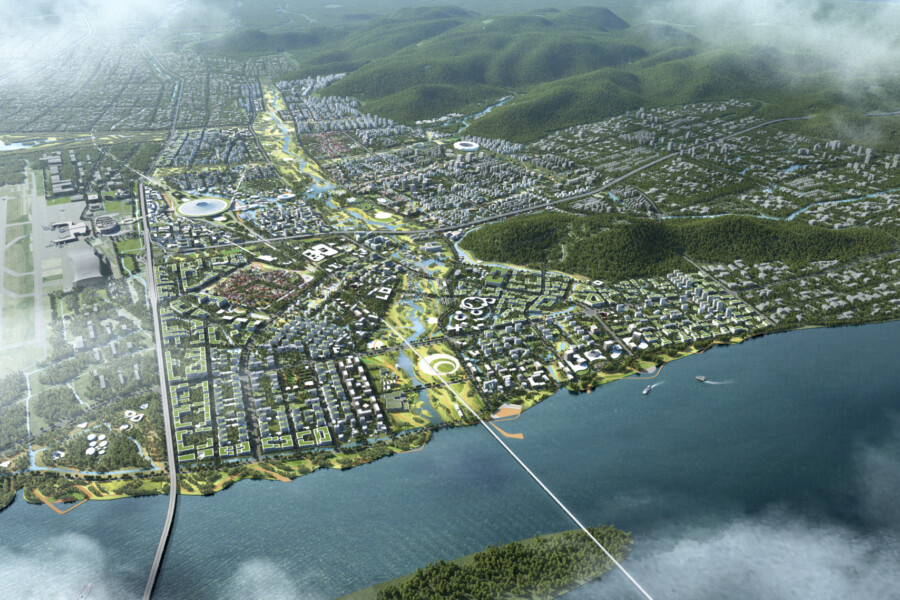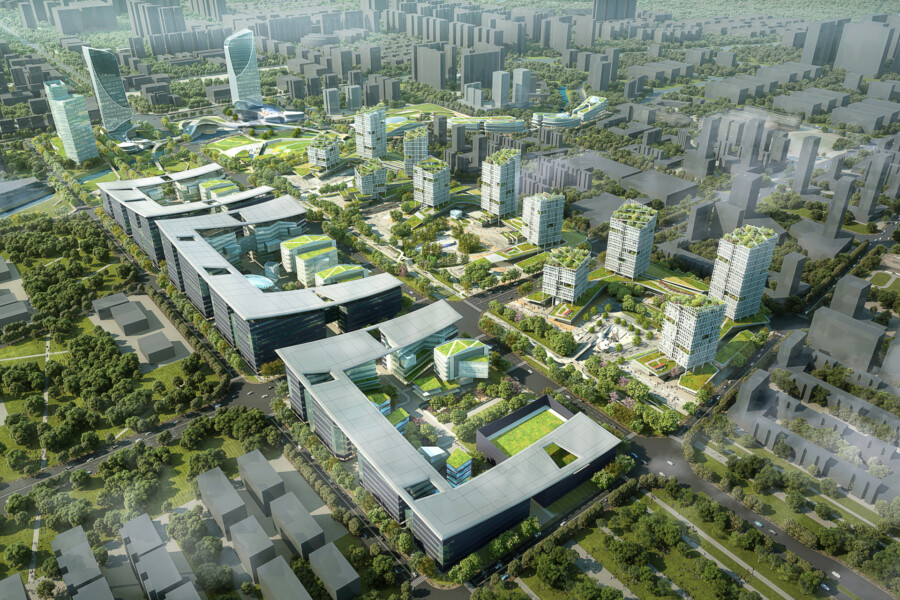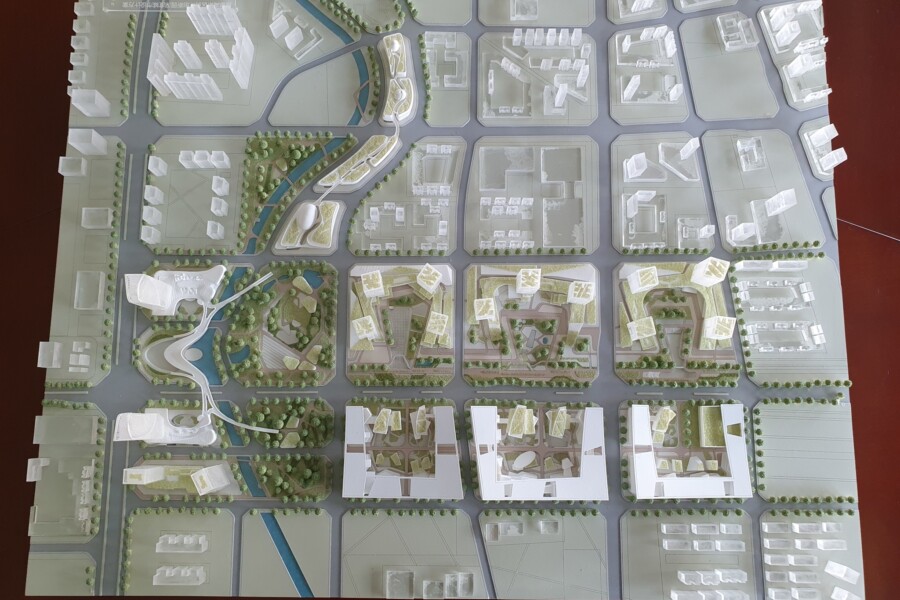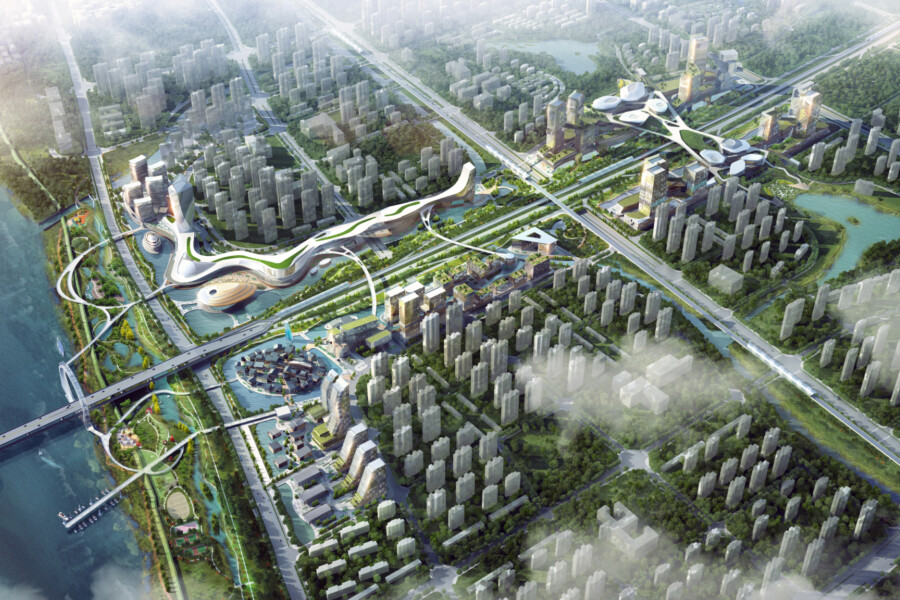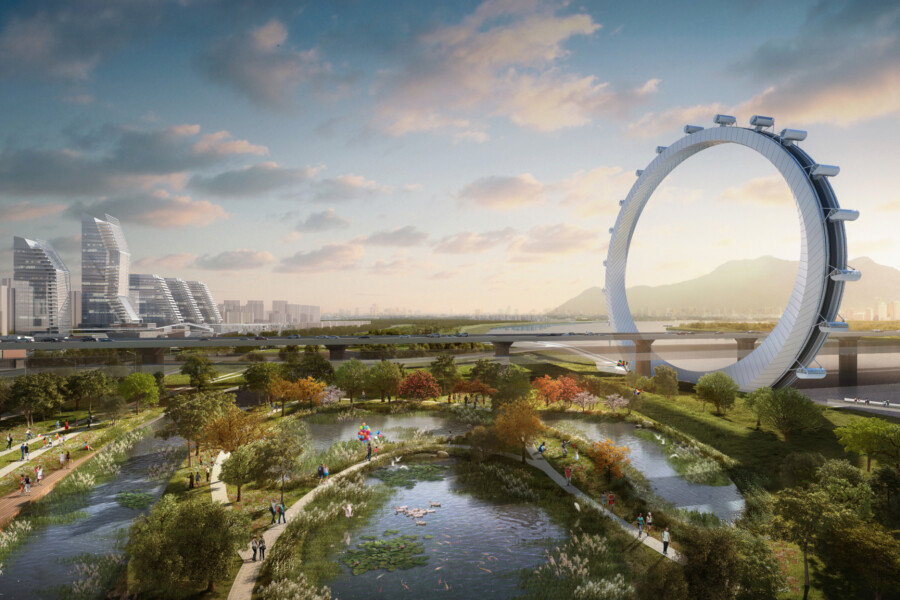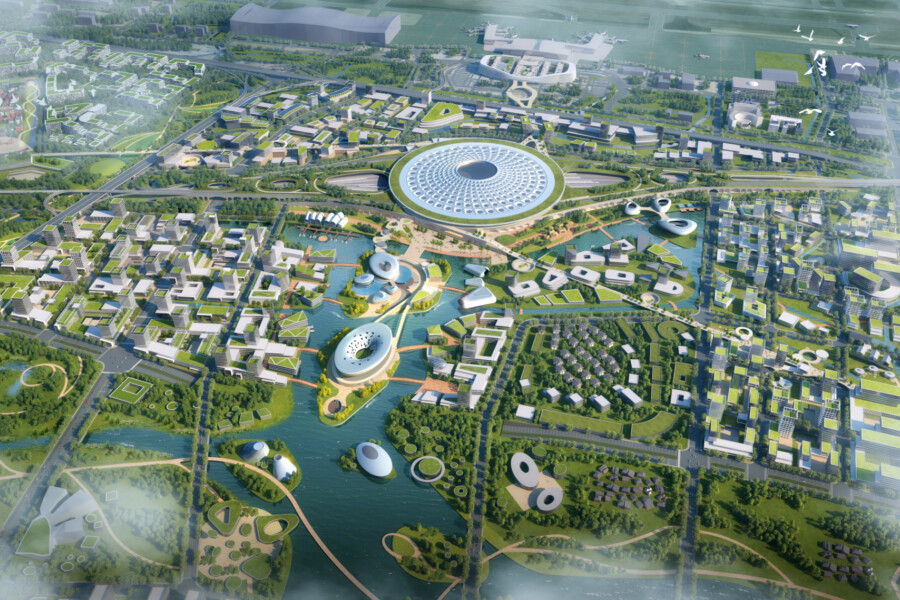
Bringing the city closer – our 15-Minute Living projects across China
There has been a lot of discussion in the media recently about the concept of the 15-Minute City and how it will change the future of urban design around the world. Chapman Taylor has been applying 15-Minute City principles on large-scale urban design projects for a number of years now, particularly in China. The essence of the 15-Minute City is to design an urban district so that all of the uses and amenities a person needs can be found within a 15-minute walk of where they live, with those functions placed intelligently so that the shorter journeys are for more regular trips. Below are some of our projects across China which adopt the 15-Minute City ethos.
Xiong'an New Area, Xiong'an, China
The 272km² Xiong’an New Area is a government-supported urban development project which aims to create a high-quality, efficient and smart city environment which encourages equality and sustainability. Chapman Taylor’s masterplan creates technologically advanced and environmentally sustainable designs for Zangang Cluster and Xiongdong District while enhancing the surrounding environment and protecting historic cultural sites.
Our design used quantitative analysis of the site’s ecological characteristics and proposes the diversion of water to serve the needs of the city as it develops while improving the waterways system and preserving and upgrading the existing water resources. Landscaping will be optimised to create a sponge city solution which combines an urban stormwater management system and a natural water filtration system.
The project is people-orientated, fully considering the physical and mental wellbeing of people of all ages and levels of ability. The masterplan ensures that everything that people require is provided within 15 minutes’ walking distance from their homes. The spatial layout ensures that educational, commercial, medical, public transportation, cultural and sports facilities are all provided within a walkable distance.
Wenzhou Eastern New Town, Wenzhou, China
The Wenzhou Eastern New Town transport-orientated masterplan creates a new eco-city with residential, leisure, retail, cultural and industrial areas strategically placed according to 15-Minute Living principles. The three-dimensional and comprehensive design integrates at least seven modes of transportation, including aviation, high-speed rail, metro, intercity, waterway transportation, a BRT system and regular public transport, around which a number of interlinked centres will grow.
The proposals envisage industrial, logistics and R&D facilities coalescing around the core air transportation sector, boosting demand for Longwan Airport’s services. The masterplan adopts Sponge City principles, making use of the current waterway system while constructing a hydrological “Super Link” to effectively connect isolated potential water storage spaces such as ponds, wetlands and lower lands so that water can be quickly drained in the flood season and stored in the dry season.
By softening the "nine-curved water chain" generated by the current waterway system, a multi-level landscape “Super Link” is formed, extending the central green landscape around the Yongqiang River into the main open space of the city and forming an urban green habitat covering the whole area. Each curve of the nine-curved water link contains a city sharing place, the water linking a collection of eight city groups. By connecting the dense network of people-friendly streets and alleys, the high-speed railway station is fully integrated within the city fabric, with an organic sequence of overground and underground spaces as well as unified and coordinated vertical urban spaces.
Xiaoli Station and Urban Area, Xiong’an, China
The Xiaoli Station and Urban Area masterplan in Xiong’an envisages a new, green urban district which focuses on Xiaoli Station and the nearby Intercity Station, around which a mix of uses are strategically placed according to 15-Minute Living principles.
The transport-orientated development creates multi-layered connections around well-defined axes, creating a unique identity for the area while integrating harmoniously with our wider masterplan for the city. The diverse green spaces will include a station sky garden, plazas, a rain garden, a cultural park and a pedestrian bridge.
There are also multi-level waterfront footpaths, parkland walkways and rooftop gardens. The development will be ecologically sustainable, with sponge city strategies for managing rainwater and the extensive green space reducing the urban heat island effect.
Qilong Innovation Park, Chengdu, China
Qilong Innovation Park is located on the south side of Chengdu in Chengdu Hi-tech Zone, where the green landscapes of Qilong Park and Langan Weir Branch Canal meet. The urban cultural and creative park design draws on characteristics of both Chengdu and Japanese culture, forming an integrated development of rail interchange stations and an urban service core. We are also collaborating on the design of cultural and creative innovation facilities within an organically growing urban and ecological landscape which uses 15-Minute Living principles.
The plot is located on the city’s east-west Chuangzhi Development Axis, with the Dayuan Core and Gazelle Valley Industrial Centre to the north and Tianfu Software Park to the east. In addition, Metro Lines 5 and 20 cross here, forming a strategically important public transportation intersection. Our design for Qilong Innovation Park is inspired by all of these interweaving characteristics, architecturally reflecting the symbiotic relationship between them.
Xiangyang Eco-City, Xiangyang, China
Designed to form part of the 850-hectare Hubei Xiangyang Cultural Tourism Demonstration Zone, this striking and technologically advanced development would be at the heart of Xianyang’s Dongjin New District, along the eastern bank of the Han River.
The 1.55 million m2 development concept envisages a wide mix of uses organised according to 15-Minute City principles, including an office and commercial centre, retail and leisure, residential areas, tourist amenities and educational institutions.
A riverside ecopark, a wildlife park, arts centres, an indoor winter sports arena, a ferris wheel park, sports venues, creative neighbourhoods, a marine park, culturally themed hotels and vibrant, entertainment-focused city squares would create the basis for a major culture and leisure destination in Hubei which will attract tourists from across the region and beyond.
---
We have been applying 15-Minute City principles on many urban designs over the last few years and we are committed to developing our strong expertise in the area on projects around the world. We strongly care about our social responsibilities and the positive change that we as designers can bring to the cities in which people live. Developers, governments and local authorities are often keen to work with us because they know that our values, our creativity and our technical abilities are perfectly in sync with the 15-Minute City vision, which is a template for urban design being increasingly adopted in countries across the globe.
